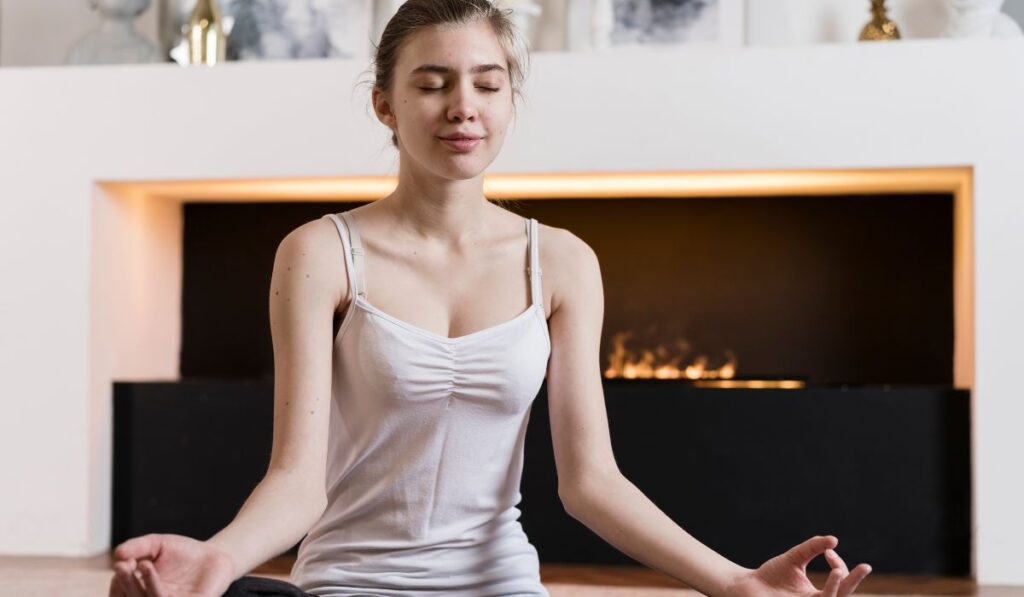Let’s face it—modern life is a stress factory. Between work deadlines, endless notifications, and trying to have a social life, I often found myself lying awake at 2 a.m., mind racing, unable to calm down. I’d tried herbal teas, meditation apps, even a weighted blanket. But nothing stuck.
Then a friend suggested yogic breathing—also known as pranayama. I was skeptical. Breathing? Really? But one day, after a particularly stressful week, I gave in. I figured I had nothing to lose.
What happened next surprised me so much that I can’t imagine skipping it even for a day. This is my story of trying a simple yogic breathing technique to ease stress, and why you might want to try it too.
The Ancient Practice with Modern Appeal
Pranayama is the ancient yogic art of controlling the breath (prana means life force, ayama means control). It’s not just “taking deep breaths,” but structured breathing patterns designed to balance body and mind.
I chose a technique called Nadi Shodhana (alternate nostril breathing). It’s been used for centuries in India to promote mental clarity and calm.
Here’s the basic technique:
- Sit comfortably with a straight spine.
- Use your thumb to close your right nostril.
- Inhale through the left nostril slowly and deeply.
- Close the left nostril with your ring finger, open the right nostril.
- Exhale through the right.
- Inhale through the right.
- Switch and exhale through the left.
That’s one cycle. Repeat for 5–10 minutes.
Sounds simple, right? But the first time I tried it, I felt a weird calm that I hadn’t felt in ages.
The First Week: From Skeptic to True Believer
During the first few days, I made myself do 5 minutes in the morning. At first, I felt a bit silly. I live in a small apartment, and the cat was very curious about my new “ritual.”
But by day three, I noticed something big: I wasn’t snapping at small annoyances. The train was late? Fine. Work was chaotic? Still stressful, but I didn’t feel like I’d explode.
By day five, I actually looked forward to it.
There’s science behind this. Slow, controlled breathing signals the parasympathetic nervous system to kick in—the “rest and digest” mode that lowers heart rate and reduces cortisol.
I also slept better. The mental chatter before bed was quieter. My breathing practice seemed to work like a reset button for my whole day.
Why I Can’t Go a Day Without It
It’s been months now, and Nadi Shodhana is my non-negotiable. Even if I’m traveling or busy, I find five minutes.
Why? Because it doesn’t just make me feel calmer in the moment—it’s changed how I react to life.
- I don’t get stuck in stress spirals as easily.
- My focus at work is better because I’m less frazzled.
- My relationships improved. Fewer arguments. More listening.
- I feel more in control of my emotions.
It’s not magic. It’s biology. Breathing is one of the few autonomic processes we can control deliberately. When we do, we’re hacking our nervous system to be calmer and more balanced.
Plus, it costs nothing. No fancy app. No gym membership. Just your breath.
How You Can Start Your Practice
If you’re curious, here’s what I recommend:
- Start Small: Try just 2–5 minutes. Consistency matters more than duration.
- Find a Quiet Spot: You don’t need a yoga studio. Your couch will do.
- Focus on Technique: Don’t rush. The slow switch between nostrils is what matters.
- Be Patient: It can feel awkward. Your nose might be stuffy. Don’t worry—it gets easier.
- Use it When You Need It: Feeling overwhelmed? Take a few rounds right then.
For me, it’s become a kind of mental hygiene. Like brushing my teeth, but for my mind.
Conclusion
If you’re dealing with stress (who isn’t?), I can’t recommend yogic breathing highly enough. It’s ancient wisdom, backed by modern science, and completely free.
I’m not saying it will solve every problem in your life. But it might just help you handle them better.
Take a breath. Try it. See how you feel.
You might end up like me—unable to imagine a day without it.

